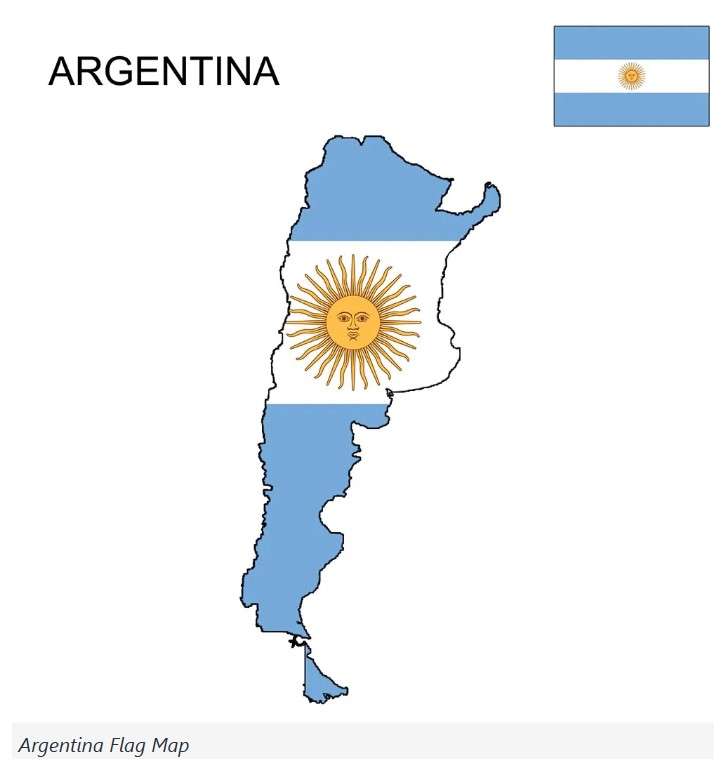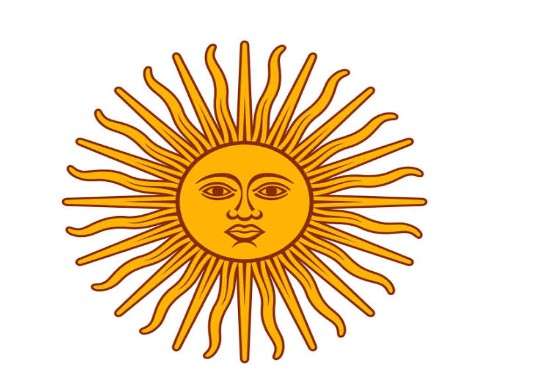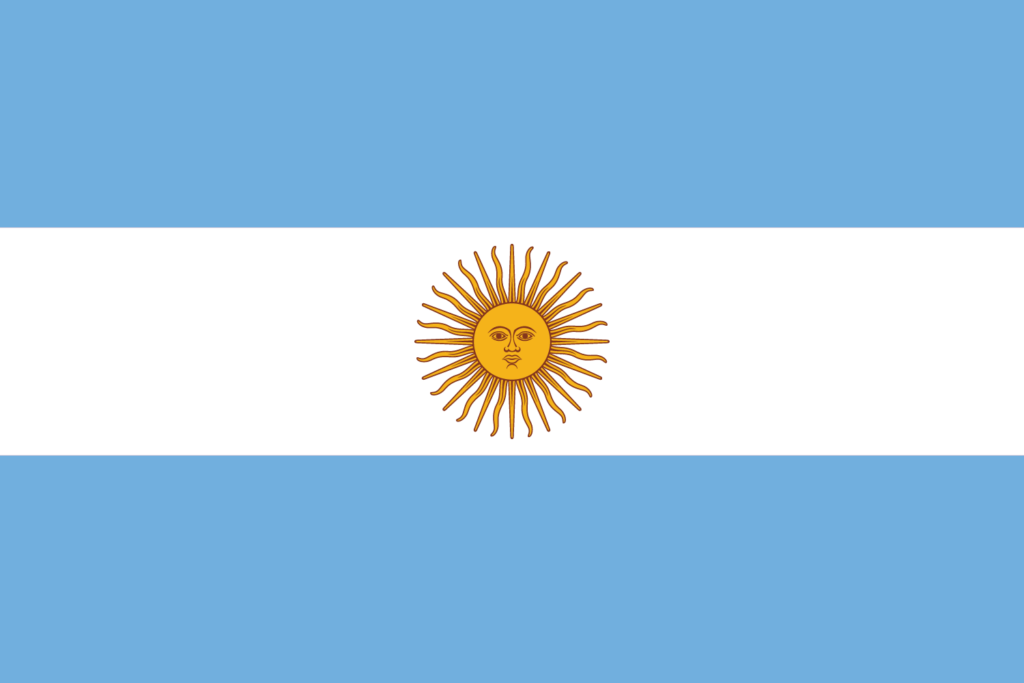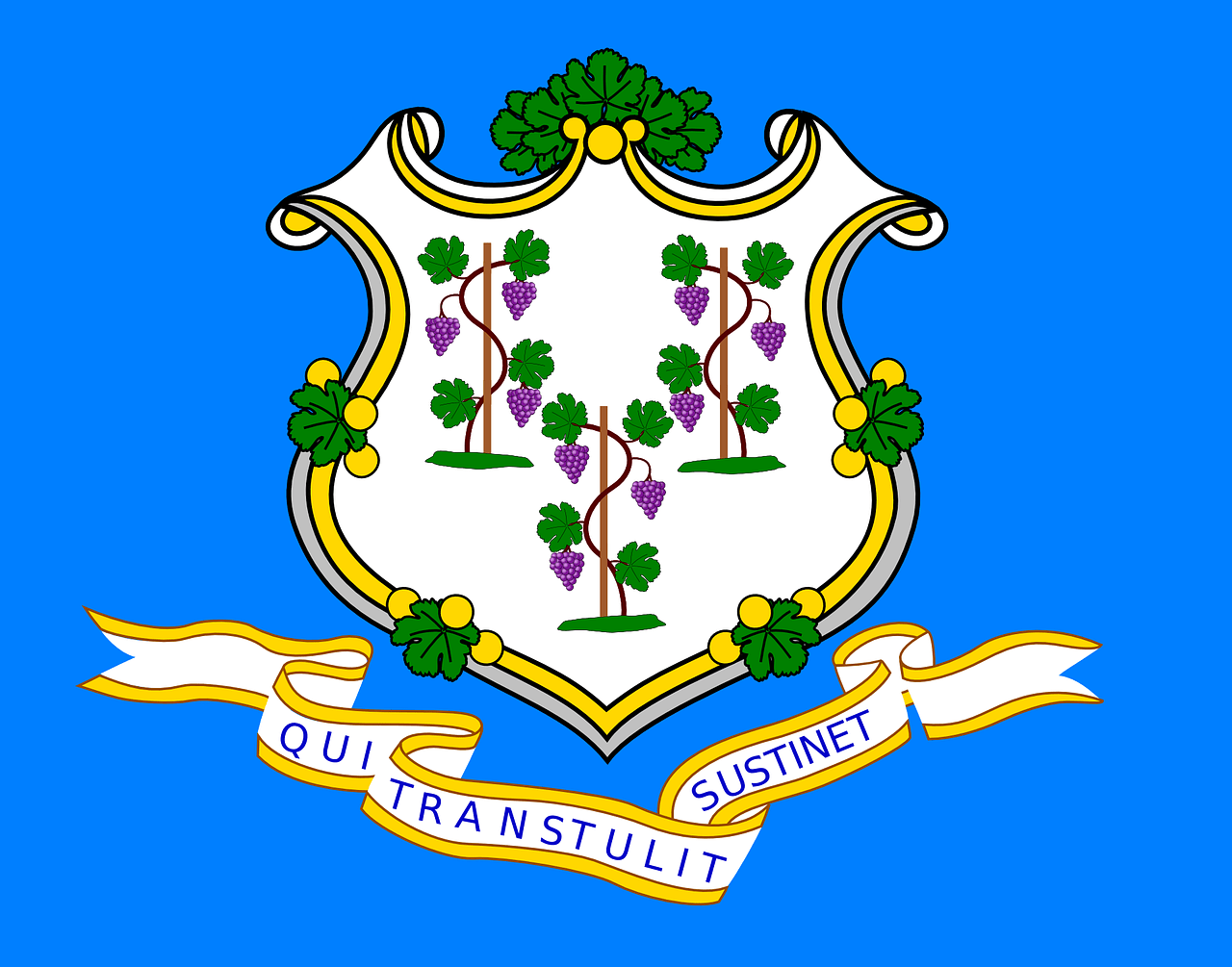
Colours
The Argentine flag is made up of three horizontal bands of color, with the top and bottom being blue and the middle one being white. The white band has the country’s national emblem, known as the May Sun, on it. The blue in the flag represents the sky, and the white represents the clouds.
Symbol And Meaning
The Argentinian flag symbolizes the clouds, sky, and sun. Blue is commonly understood to represent freedom and the majesty of the sky. White represents the clouds. The sun in the center of the flag, called the Inca Sun or el Sol de Mavo, represents the Sun of May and the process of independence that began on May 25, 1810.
According to legends, the sun emerged when the new Argentinian government was declared, which was seen as a positive sign.
The Shape Of The Flag
- The flag’s shape follows a specific ratio, either 9:14 or 5:8, and is officially 0.9 meters by 1.4 meters in size.
- The stripes on the flag are 30 meters wide, and the sun in the center has a diameter that is one-third the length of the central white stripe.
- The sun’s external diameter is also five-sixths of the length of the central white stripe.
Amazing Facts About The Flag Of Argentina
| Argentina’s flag day | Argentina’s flag day is celebrated on June 20th, which is also the day that the flag’s creator, Manuel Belgrano, passed away. |
| Anthems | There are three national anthems that have been composed for the flag |
| Argentina’s Flag has inspired other flags | The flag has inspired the flags of other Central American countries, such as El Salvador, Uruguay, Guatemala, Costa Rica, Honduras, and Nicaragua. The flag of Nicaragua, for example, has two horizontal blue stripes with a horizontal white stripe in the middle and the only difference between it and the Argentine flag is the insignia. |
| Modification in the flag | In November 2010, the Argentine flag was slightly modified to have darker blue stripes and a redesigned sun disk. |
| Establishment of Flag Day | Flag day in Argentina was established in 1938. |
History Of Argentina’s Flag
Argentina’s flag has a long history that is connected to both the country’s fight for independence from Spain and the Incan sun worship.
The flag consists of three horizontal bands, with the top and bottom bands being light blue and the middle band being white. There is some debate about the meaning behind the colors of the flag, but some believe that white represents silver.

The country of Argentina was named by early Spanish conquerors, who believed that the region contained a large amount of silver due to the Latin word “Argentinum” meaning silver.
The blue bands on the flag may represent the sky, the waters of the Rio de la Plata in Argentina, or the blue color used in the coat of arms of the Spanish royal house of Bourbon.

Image Source: iStock
Most striking part of the Flag
The most striking feature of the flag is the human face in the center, surrounded by a gold disc with both straight and wavy rays emanating from it, representing the sun.
This sun, known as “el sol de mayo” or “The Sun of May,” is a national emblem and refers to Argentina’s May revolution, which eventually led to the country’s independence from Spain.
The Argentine coinage from 1813 and the Uruguayan flag both feature an image of the sun, which is believed to pay tribute to the Incan sun god Inti. The Incas worshipped the sun and believed that their rulers were descendants of the sun.
They built sun temples throughout their empire and the original 1813 national anthem of Argentina references the Incas and their “ancient splendor.”
Juan de Dios Tupac Amaru, a Peruvian of Incan noble descent, designed “The Sun of May,” which features the sun as well. Early versions of the Peruvian flag also included the sun.
Who designed the flag?
Manuel Belgrano, an Argentine politician, and military leader designed the Argentine flag.
He based the design on a circular emblem called the cockade of Argentina, which he had created in 1812.
The cockade of Argentina

The cockade, which is similar to the Argentine flag, features a light blue circular band around its perimeter, a white inner band of the same width, and a light blue dot in the center creating a bulls-eye effect.
The cockade is also a national emblem, and National Cockade Day is celebrated on May 18th.
Both the cockade and the flag were created after the 1810 May Revolution, which eventually led to Argentina’s independence from Spain. They were intended to serve as symbols of identity for the nation as it fought for freedom.
Argentinian revolutionary soldiers wore the cockade and swore allegiance to the flag as a sign of loyalty. The blue colours of these symbols were chosen to differentiate them from the red used by Spanish royalist forces.
National Flag Day
National Flag Day is celebrated on June 20th, the day of Manuel Belgrano’s death. In addition to designing the flag and cockade, Belgrano is known for his participation in numerous freedom-fighting campaigns, particularly in the upper Peru region. Flag Day celebrations are particularly lively in Rosario, the city where the Argentine flag was first raised in 1812. On Flag Day, public officials give speeches, and police, armed forces, war veterans, and others participate in a parade to honor the flag.
Recently, the people of Rosario created what is known as the longest flag in the world, which is carried in the parade. National Flag Day celebrations pay tribute to the Argentine flag and honor the forefathers of the nation who fought for the independence that is celebrated by modern Argentinians.
Fast Facts about Argentina
| Official Name | Argentine Republic |
| Form Of Government | The Federal Republic with two legislative houses |
| Capital | Buenos Aires |
| Official Language | Spanish |
| Population | 44,694,198 |
| Money | Argentine peso |
| Area | 1,073,364 square miles (2,780,400 square kilometers) |
| Favourite Sport | Soccer |
| National Flag Day | 20th June |
Argentina is divided into four regions: the Andes, the North, the Pampas, and Patagonia. The Pampas region is the agricultural center of the country.
- The eastern region of Argentina, beyond the Andes Mountains, is a flat and fertile grassland area known as the Pampas.
- The Atlantic Ocean is the eastern border of Argentina.
- To the northwest of Argentina is Bolivia, and to the north is Paraguay.
- The Andes Cordillera, a range of high mountains, forms a natural border with Chile that spans a distance of 3,195 miles (5,141.9 kilometers).
Culture Of Argentina
Unlike some other Latin American countries like Mexico, Peru, and Ecuador, Argentina has a relatively small indigenous population and a large population of people with European ancestry. The majority of the population, around 95%, is descended from European immigrants, mainly from Italy, Spain, and Germany. Many members of the native population died from diseases introduced by Europeans.

Image Source: iStock
Approximately half of the population of Argentina resides in the region around Buenos Aires, the country’s capital and largest city. Buenos Aires has earned the nickname “Paris of South America” due to its European cultural influences. It is highly educated, with a literacy rate of 97%.
The Gauchos, similar to American cowboys, are a symbol of the vast grasslands of the Pampas region.
Biodiversity Of Argentina
Argentina is home to a diverse range of animal species. The coast of Patagonia is inhabited by elephant seals, fur seals, penguins, and sea lions. The Atlantic Ocean surrounding Argentina is home to various species of sharks, orcas, dolphins, and salmon.
The northern region of Argentina is home to several large cat species, including cougars, jaguars, and ocelots. There are also crocodiles and caiman in this region. The subtropical north is also home to flamingos, toucans, turtles, and tortoises.
Patagonia is a region with a low population density but abundant natural resources and wildlife, including herons, condors, pumas, tortoises, and guanacos.
The highest peak in the Andes mountain range is Cerro Aconcagua, which reaches an elevation of 22,384 feet (6,960 meters). Northeast Argentina is home to rainforests and the Iguazù Falls, which are located on the border between Argentina and Brazil. These spectacular falls have a horseshoe shape and stretch along a front of 1.6 miles (2.7 kilometers).
As Argentina grows and develops, it is facing challenges such as deforestation and pollution.
The Economy And Government Of Argentina

Image Source: Stock.adobe
Argentina is a federal republic with a democratic government. After experiencing a period of political instability, the country has had several democratically elected presidents.
The National Congress, the legislative branch of the government, is composed of the Senate (with 72 seats) and the Chamber of Deputies (with 257 seats). The Supreme Court, the highest court in the country currently has seven judges, but this number is set to be reduced to five in the coming years. The president appoints judges to the Supreme Court, and their appointments must be approved by the Senate.
In South America, Argentina is the second largest economy, behind Brazil. Argentina’s economy is driven by agriculture, forestry, and fishing.
By: Richa Singh



